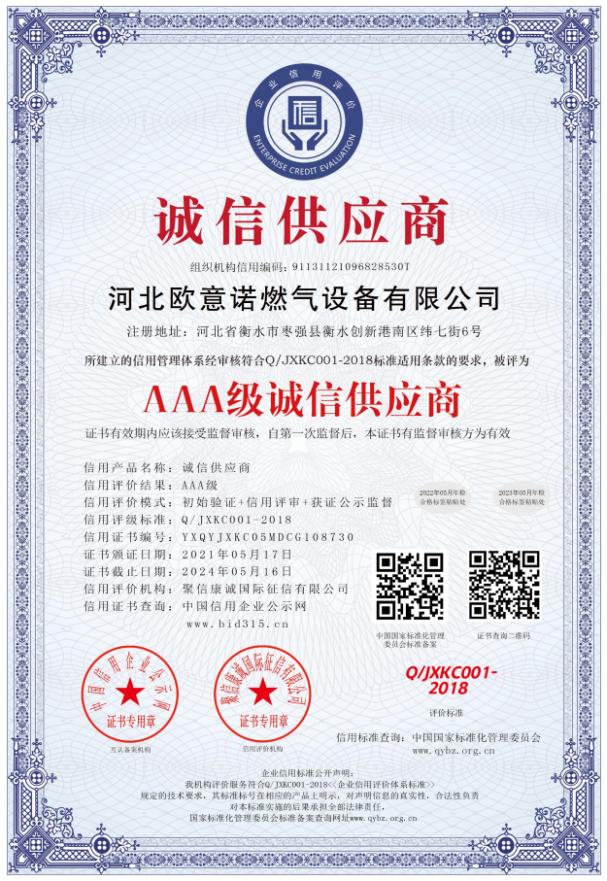
Dec . 26, 2024 11:40
Back to list
Pressure Regulation Device for Reducing System Pressure Efficiently and Safely
Understanding Pressure Reducing Devices Functionality and Applications
Pressure reducing devices, commonly known as pressure regulators, play a vital role in various industrial and domestic applications by maintaining a controlled output pressure from a higher input pressure. These devices are crucial in ensuring the safe and efficient operation of gas and liquid systems, where fluctuating pressures can lead to equipment damage, inefficient operation, or even hazardous situations.
Operational Principle
At the heart of a pressure reducing device is its ability to lower the pressure of a fluid while maintaining a constant output level. This is achieved through mechanical components such as a diaphragm, spring, and valve. When high-pressure fluid enters the regulator, the diaphragm moves in response to the pressure differential—allowing the valve to open or close accordingly. By balancing the input pressure against the spring force, the device ensures that the output pressure remains within a predetermined range.
The control mechanism is exceptionally important. For many applications, a consistent pressure supply is essential, whether it's for medical gas delivery, fuel supply systems, or even water systems in residential buildings. The ability to finely tune the output pressure enhances system performance and reliability.
Types of Pressure Reducing Devices
Pressure reducing devices come in various forms, tailored for specific applications. Common types include
1. Gas Pressure Regulators Often used in gas distribution systems, these regulators ensure that gases like propane, natural gas, or oxygen are delivered at safe pressure levels to appliances and equipment.
pressure reducing device

3. Industrial Pressure Regulators Used in manufacturing and process industries, these regulators are designed to handle larger volumes and more complex systems, often involving multiple stages of regulation to maintain system integrity.
4. Electric Pressure Regulators Integrating electronic controls, these advanced devices can monitor and adjust pressure in real-time, often via feedback systems, making them suitable for sophisticated industrial applications.
Importance Across Industries
The significance of pressure reducing devices spans numerous sectors. In the medical field, precision in gas delivery can be a matter of patient safety, making the reliability of medical gas regulators critical. In the energy sector, gas pressure regulators are essential for ensuring proper combustion in heating systems, thereby improving energy efficiency and minimizing emissions.
Moreover, in the food and beverage industry, maintaining the correct pressure levels in carbonation and pneumatic systems is key to product quality and safety. Without effective pressure regulation, there could be risks of contamination or product loss.
Maintenance and Safety
While pressure reducing devices are generally robust, regular maintenance is important for optimal performance. Over time, components may wear out, leading to inaccuracies in pressure regulation or leaks. QInconsistent output pressure can not only affect operational efficiency but also pose safety risks. Periodic inspections, calibration, and prompt replacements of worn-out parts contribute to the longevity and reliability of these devices.
Conclusion
In conclusion, pressure reducing devices are integral components of modern fluid systems, enhancing safety and efficiency across various applications. Understanding their functionality, types, and importance can help industries select the right equipment for their specific needs, ensuring smooth operations and safeguarding against potential hazards. As technology advances, we can expect further innovations in pressure regulation, improving performance and reliability across the board.
Next:
Latest news
-
Safety Valve Spring-Loaded Design Overpressure ProtectionNewsJul.25,2025
-
Precision Voltage Regulator AC5 Accuracy Grade PerformanceNewsJul.25,2025
-
Natural Gas Pressure Regulating Skid Industrial Pipeline ApplicationsNewsJul.25,2025
-
Natural Gas Filter Stainless Steel Mesh Element DesignNewsJul.25,2025
-
Gas Pressure Regulator Valve Direct-Acting Spring-Loaded DesignNewsJul.25,2025
-
Decompression Equipment Multi-Stage Heat Exchange System DesignNewsJul.25,2025

